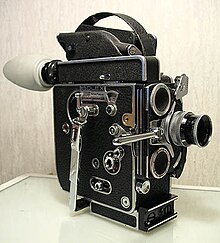
A documentary film or documentary is a non-fictional motion picture intended to "document reality, primarily for instruction, education or maintaining a historical record".[1] Bill Nichols has characterized the documentary in terms of "a filmmaking practice, a cinematic tradition, and mode of audience reception [that remains] a practice without clear boundaries".[2]
Early documentary films, originally called "actuality films", briefly lasted for one minute or less. Over time, documentaries have evolved to become longer in length and to include more categories. Some examples are educational, observational and docufiction. Documentaries are very informative, and are often used within schools as a resource to teach various principles. Documentary filmmakers have a responsibility to be truthful to their vision of the world without intentionally misrepresenting a topic.
Social media platforms (such as YouTube) have provided an avenue for the growth of the documentary-film genre. These platforms have increased the distribution area and ease-of-accessibility.
- ^ "Oxford English Dictionary". oed.com. Archived from the original on 25 April 2018. Retrieved 25 April 2018.
- ^
Nichols, Bill (1998). "Foreword to the new and expanded edition". In Grant, Barry Keith; Sloniowski, Jeannette (eds.). Documenting the Documentary: Close Readings of Documentary Film and Video. Contemporary approaches to film and media series. Detroit: Wayne State University Press (published 2013). p. xiv. ISBN 9780814339725. Retrieved 6 July 2020.
Even after the word 'documentary' began to designate something that looked like a filmmaking practice, a cinematic tradition, and mode of audience reception, it remains, to this day, a practice without clear boundaries.